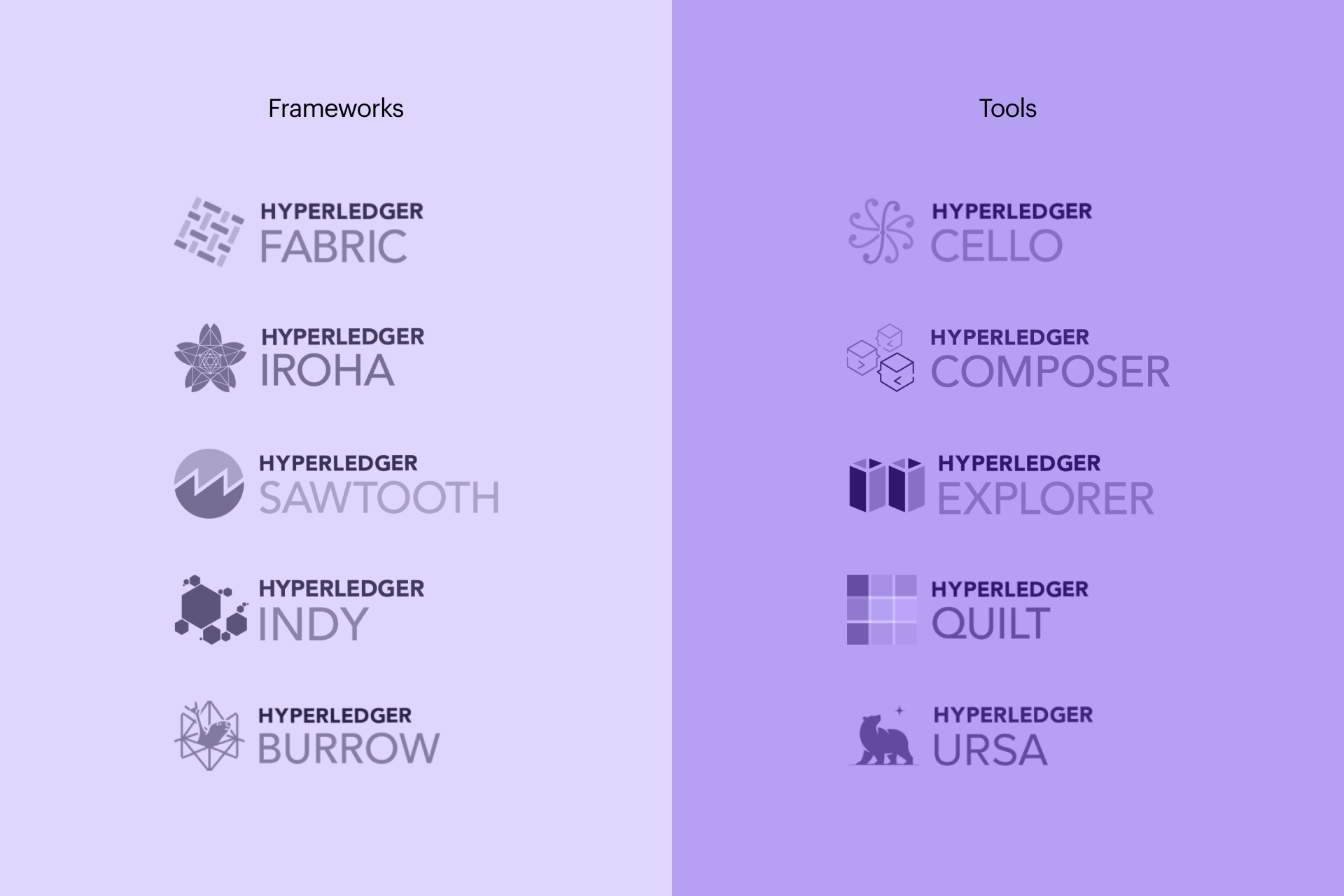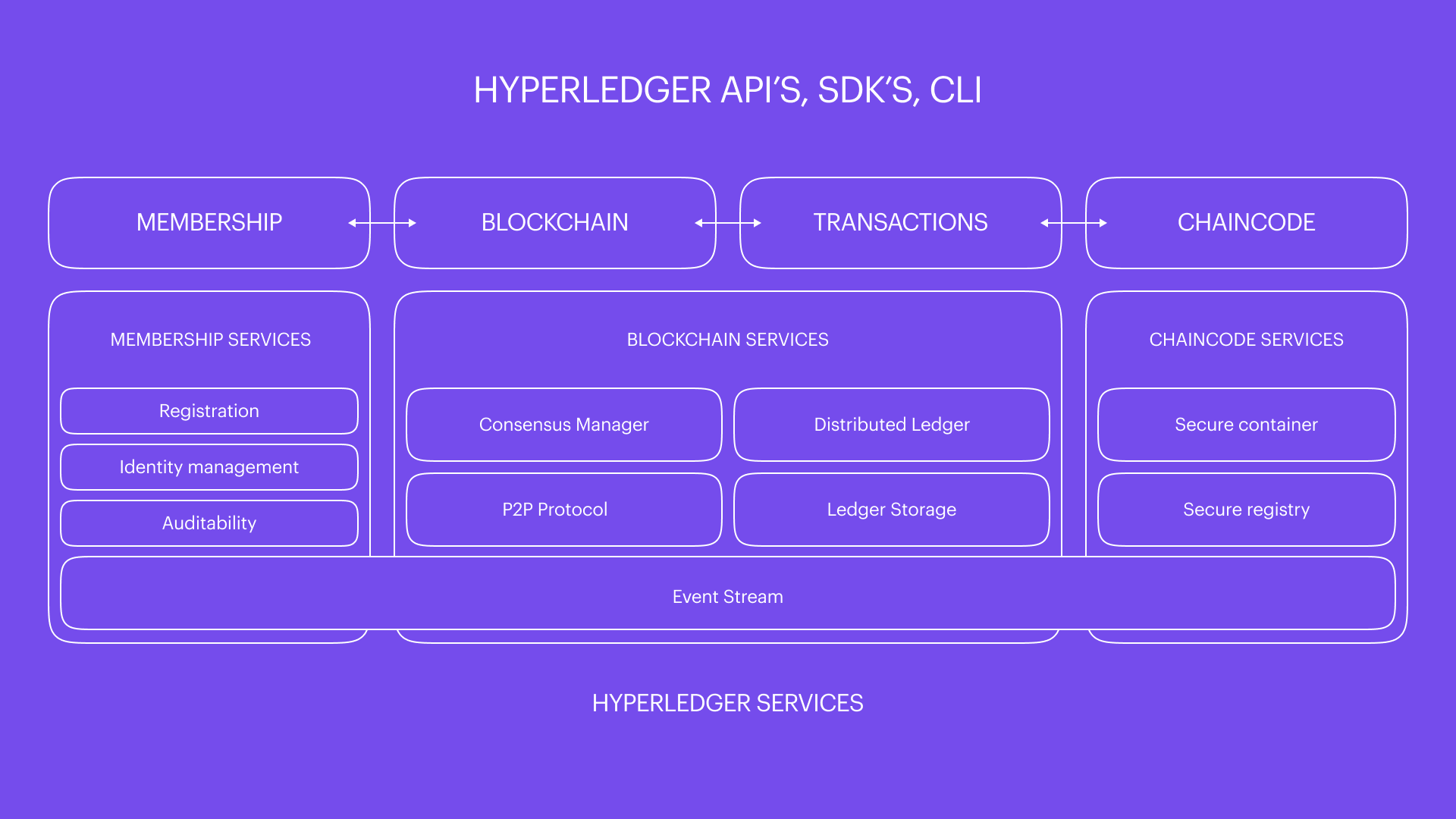Reasons to choose Hyperledger as open-source blockchain for business
Hyperledger allows you to create private blockchain
We discuss the benefits of choosing Hyperledger for blockchain development, covering its features, flexibility, and use cases. The article provides insights into how Hyperledger stands out in the blockchain ecosystem and why it's a strong choice for enterprise solutions.
Using blockchain in business projects saves time and money usually spent on developing unification and automation-related solutions. Blockchain finds use in many different industries. By deconstruction of business processes of a company, you can identify dozens of potential uses for blockchain and implement it in software. Here are only a few examples of what you can do with the technology:
- Data security. Using blockchain, you can create a document storage system that keeps track of all changes.
- Self-tracking contracts. Using blockchain, you can develop a system that’ll keep track of how contract obligations are being fulfilled, and close the deal, release the money and/or transfer ownership, only after certain conditions are met. This is how smart contracts work.
- Confirming decisions. Blockchain helps to create a system where those responsible for certain decisions can launch processes. Nothing will start until one of the participants signs off on it. It can also verify if everything’s ready for a launch, and won’t let anyone place a confirmation if there’s something missing.
- One of the technologies for developing blockchain-based solutions is the IBM Hyperledger project.
Hyperledger history
In 2015 Hyperledger Consortium was created, led by IBM and curated by the Linux Foundation. Premier IT corporations like Microsoft, Cisco, and Intel, as well as financial institutions like American Express, JP Morgan and the London Stock Exchange have expressed interest in joining the project.
In 2016 the Consortium’s technical staff was assembled out of the representatives of 12 IT companies. Intel presented their first framework based on Sawtooth.
In 2017 IBM announced the release of the Hyperledger Fabric 1.0 framework. Oracle joined the Consortium, as well as used the technology for its Blockchain Cloud Service.
In 2018 after 9 new partners joined the organization, the Hyperledger team announced that over 250 companies had pledged to the project at the moment. A partnership with the Enterprise Ethereum Alliance was forged.

What is Hyperledger?
- Hyperledger allows you to create private blockchain.
- No need for mining or releasing tokens. Verification nodes notify each other of operations, reach consensus and create new block completely on their own.
- It allows flexible network permission setup, as well as helps you to create private systems with inaccessible blocks, meaning third parties can’t extract any data from them.
- Transactions can be made confidential, only accessible to users with the necessary decryption keys.
- It can be utilized using various programming languages, such as C++, JavaScript, Python, Golang, and Java.
Hyperledger features can be used to create a general-purpose blockchain, while the competing solutions can only perform narrow tasks:
- Ripple is made for organizing payment systems
- R3 CEV is for traditional transactions and signing agreements
- Ethereum only works with a public blockchain
Hyperledger frameworks
Fabric. It offers the component approach to creating a blockchain, allowing the developer to choose from a number of consensus algorithms, identification services, and registry data formats.

Iroha. It is used mostly in mobile applications and for integrating blockchain solutions into existing IT infrastructure.
Sawtooth. This framework is made for use in electronic accounting. It uses its own consensus algorithm called PoET (Proof of Elapsed Time). Supports integration with Ethereum.
Indy. It is a set of developer tools for creating public blockchain networks. Supports electronic ID systems (Self-Sovereign Identity).
Burrow. This solution is used for deploying an exclusive blockchain that handles smart contracts the same way as the Ethereum virtual machine. It has a remote call gate for fulfilling contracts from different compatible registries.

Hyperledger tools
Cello. It is intended for use in cloud services and virtual environments where it’s deployed as blockchain-as-a-service.
Composer. It offers a set of Fabric-based tools for developing smart contract logic. Using it, a private blockchain could be prototyped much faster.
Explorer. It is a browser alternative that offers users a GUI for monitoring transactions and related data (balance, status etc.) from the blockchain ledger.
Quilt. It allows you to process quick transactions through the ILP protocol intended for financial operations between distributed and traditional systems.
Ursa. This is a modular cryptographic library that offers developers a unified SDK for blockchain security.
Z-Mix. This is a fork of Ursa that adds support for certain cryptographic algorithms such as SNARKs and aggregated signatures.
Real-world implementations
Hyperledger is already widely implemented by large corporations in their products.

- The Visa international payment system uses Hyperledger Fabric for its corporate transaction service B2B Connect to prevent fraud and ensure faster transactions.
- The Japanese tech giant Hitachi has implemented a Hyperledger-based system for fingerprint-verified payments and coupon activations. Transactions are verified by a distributed ledger.
- Oracle utilized a Hyperledger Fabric-based distributed ledger to control and monitor supply chains.
- IBM Watson IoT offers developers an SDK for creating Internet-of-Things applications.
Small and mid-level business projects are becoming more and more numerous every day, while the blockchain technology is getting implemented in a wide variety of industries: in banking, economics, transport, logistics, healthcare, retail, construction and so on. Evrone used the Hyperledger open-source solution to develop blockchain-based projects, such as the Crypton.trading trade bot and Trustlogics.
Hyperledger strives to provide a secure, private, and trustworthy environment for businesses that deal with huge amounts of data. Using blockchain in business projects saves time and money usually spent on developing unification and automation-related solutions.

